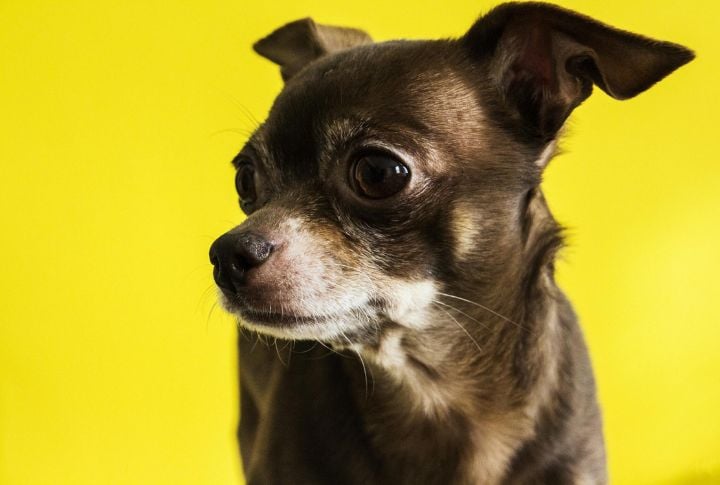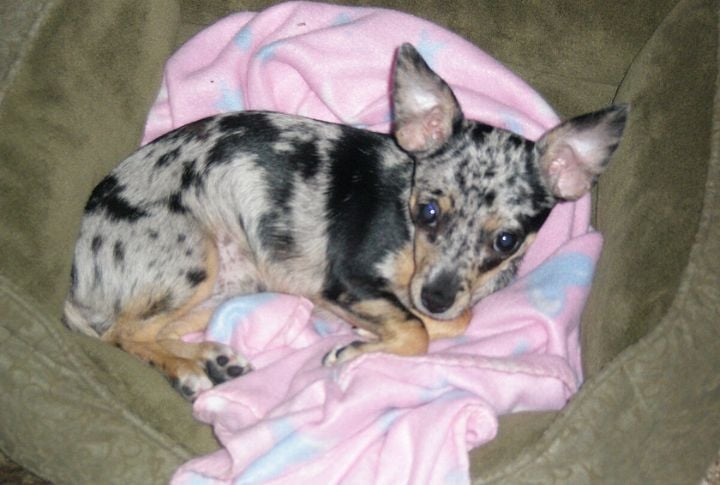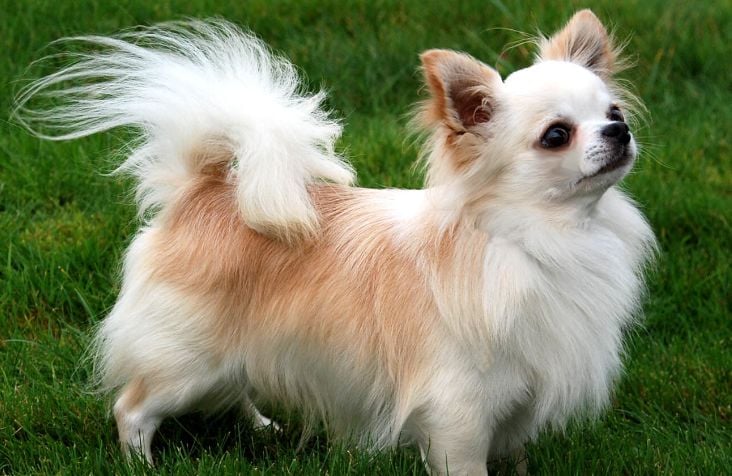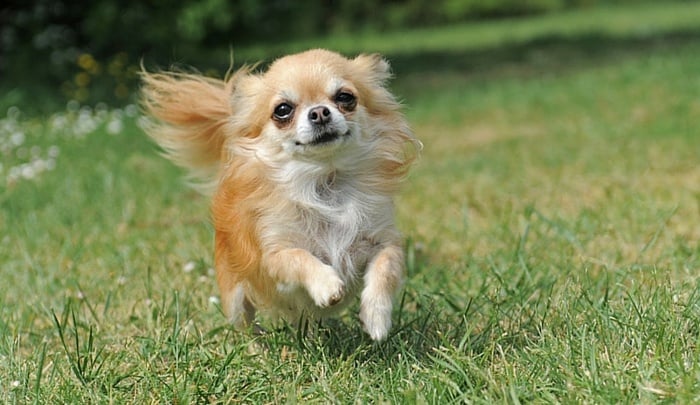15 Coat Details That Make Each Chihuahua Unique

Most people picture a Chihuahua and think of size. But that’s not the only thing that makes them stand out. Look a little closer, and their coats start revealing something different—subtle patches and colors that quietly steal the spotlight. Each pattern reflects generations of selective breeding shaped by climate and personality.
Feathered Long-Haired Finish

Not every long-haired Chihuahua sports a luxurious mane right away. This coat type takes up to two years to reach its full feathery flow. When fully grown, you’ll spot gentle fringes on the ears, tail, and legs, softening the dog’s overall silhouette.
Soft Cream Coat Hue

Cream coat color usually looks almost white at first glance, but its subtle ivory coloring carries warmth. These coats can develop light peachy undertones in summer. Cream is typically paired with a pinkish nose and light nails, which makes them easy to identify.
Classic Fawn Color Tone

Fawn isn’t just a color—it’s a Chihuahua legacy. Found across generations, this soft tan hue ranges from pale wheat to warm honey. It’s a neutral shade that highlights the breed’s eyes and expressions, making it a favorite among both pet owners and show judges.
Cool Blue Gray Tint

Blue Chihuahuas don’t look sky-colored, but their steely gray coat carries a soft and matte coolness. The “blue” under the light results from diluted black pigment. Vets usually advise careful sun protection, as these coats can be sensitive to light and prone to thinning.
Sharp Black And Tan Pattern

Ever notice the sharp contrast on a Doberman? Black and tan Chihuahuas share that same layout. Distinct tan points appear above the eyes, on the cheeks, chest, and paws. Such a pattern is genetically dominant, often hinting at strong lineage in short-haired varieties.
Rich Chocolate Brown Shade

Chocolate-colored dogs carry a recessive gene that dilutes black into a warm, milk-to-dark brown hue. Their nose and paw pads are typically brown, which matches the color of their coat. Groomers note that sun exposure can lighten chocolate tones over time, adding highlights.
Striped Brindle Patterning

Patterned coats aren’t always obvious at birth. Brindle stripes appear like tiger marks layered over a base shade, such as fawn or tan. This look results from a dominant gene, but it may only be visible if both parents contribute to the trait. It shows best on short hair.
Pure Snowy White Coat

True white tones lack any cream or beige undertones. This coloration is genetically rare in Chihuahuas and is generally paired with black noses and dark eyes. Breeders point out that pigment loss near the eyes can lead to increased tear staining, which usually requires extra grooming around the face.
Glossy Smooth Coat Texture

Run your hand across a short-haired Chihuahua, and you’ll feel a sleek, flat layer that clings close to the body. Glossy, smooth hair grows in a single layer, meaning it has no undercoat. That’s why smooth coats shed more noticeably than you might expect, despite their tidy appearance.
Deep Auburn Red Coloring

Some colors seem to glow under sunlight, and deep auburn red is one of them. Such a striking tone often darkens as the dog matures or spends time outdoors. Groomers appreciate how well it frames the eyes and face, especially on dogs with longer feathered fur.
Shaded Sable Overlay

Light and dark meet in sable fur. Each hair holds two tones, usually starting on pale and fading into a darker tip. The contrast creates a shaded look that reacts to changes in lighting. Over time, exposure and age can gradually alter the appearance of the pattern.
Defined Tan Facial Points

Sometimes called “eyebrow spots,” these symmetrical tan markings help highlight subtle eye movements. That makes expressions like curiosity or alertness easier to read. Found above the eyes and on the cheeks, they’re part of a tan-point pattern that may also appear on the chest, feet, or tail.
Mottled Merle Color Mix

Coats showing marbled patches of light and dark are typically the result of the merle gene. It doesn’t just influence fur—it can also change eye color. Interestingly, dogs with this gene may have one blue eye or even both. However, ethical breeding is important to avoid health complications.
Dusty Blue Fawn Blend

Blue fawn coats combine a soft, silvery-blue sheen with fawn as the base color. It’s a rare blend where diluted pigment mutes both shades, which creates a washed or “dusty” appearance. The result is uniquely muted, sometimes highlighted by a slate-gray nose.
Bold Piebald Patchwork Look

If your Chihuahua has large, clearly defined white patches over a colored base, that’s piebald. Unlike Merle, piebald is not mottled; it is high-contrast. These patterns often appear on the chest or back and are completely random, making each dog visually one-of-a-kind.



